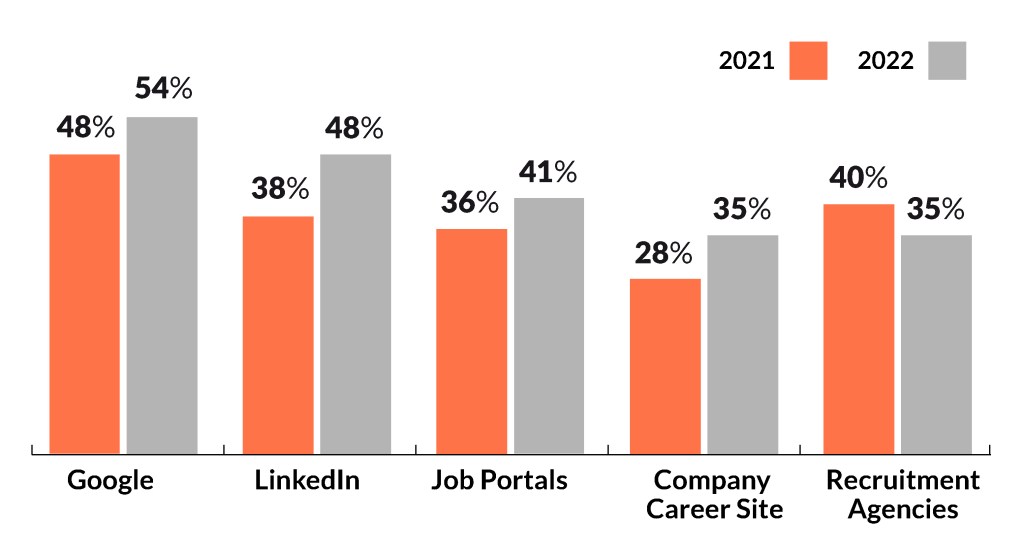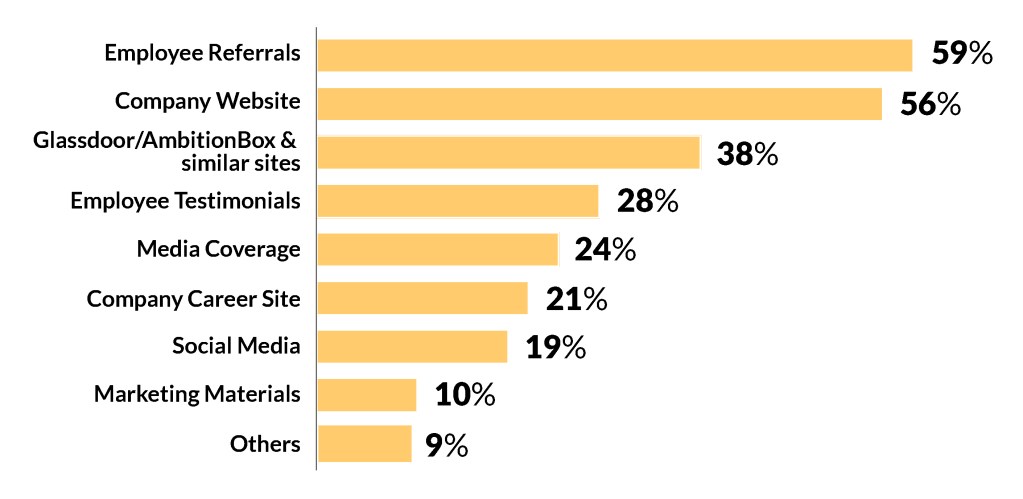
Whether it is a new person entering the labour market or an existing employee looking for better opportunities, searching for a job is a constant activity. But there are some fundamental shifts at play in the way job hunters are searching for new workplaces in India. Job portals are witnessing more traction from job aspirants compared to hiring agencies if we go by the Randstad Employer Branding Research Report of India 2022.
If the trends related to the high attrition rates are anything to go by, it is now becoming critical for human resource managers in the country to not just understand these changes but also develop a strategy around them. The strategy would need to incorporate a game plan not just to stem the organisation’s own attrition levels but also ways to attract talent that is floating around or always on the lookout for a better deal and career prospects.
Also read: Inadequate Hiring Practices Can Adversely Impact Your Employer Branding Strategy; Here's A Fix
First things first
Attrition is now considered a cliched subject but needs careful scrutiny. The attrition rates shot up during the Covid-19 pandemic as employees found new comfort zones that provided them with a work-life balance.
As various businesses got disrupted or witnessed temporary dislocation with a lack of revenue but overheads, including wage costs to handle, many resorted to rightsizing. But as the economy bounced back into action, they found that they had created an adverse brand perception as an untrustful employer.
So, it’s not a surprise that human capital management consultancy Randstad’s Employer Brand Research report for 2022 shows that nearly one-third of employees intend to switch jobs in the country in the first half of the year.

What should ring alarm bells is that this came after an already tumultuous year. In the second half of 2021, for instance, nearly one in four employees switched employers. In the previous year, during the same period, one in five employees had changed jobs.
This shows job hopping has only increased as concerns about the pandemic moderated and employers started insisting on work from office.
In the age group of 25-34, covering largely the early to middle management roles in most companies, this propensity to switch jobs was even higher.
At the same time, there is a distinct difference between the ‘colour of the collar’ and the propensity to switch jobs.
As many as 22% of white-collar employees changed their jobs in the last six months of 2021, slightly more than a year ago. The intention to switch employers in the first six months of 2022, however, got tempered for this set of workers. Around 38% of the white-collared workforce said they intended to move on, compared with nearly half of the total who said so the previous year.
But the blue-collared workforce is seeing a major shuffle.
Half of the blue-collar workers changed employers in the last six months of 2021, which was about the same as a year before. This shows that blue-collar workers changed employers in the last half of 2021 way more often than white-collar employees.
Moreover, their intention to switch employers in the first half of 2022 is also more than that of white-collared.
Job portals for the win
There are two key trends at work here.
One deals with the broader mode of searching for jobs. While generic web search engine Google continues to lead the show, recruitment agencies, the second most used channel to search for new employers last year, have slipped several notches this year.

Indeed, this shows how automation and the internet are disrupting the job search market. The traditional way to search for jobs via specialised agencies is the only mode that saw a decline in the proportion of employees using it to find new employers.
Professional networking sites, job search engines or job portals and job boards have gained rankings. In fact, job portals have moved from the fourth spot to the third spot in the most used channel in 2022.
Within the set of job portals, Naukri.com, the largest player in the country, retains the top spot with more than four-fifth of people who use the job boards using it as the first choice to find new employers. It is followed by Indeed and Timesjobs.

The second major shift that has been noticed is that, within the social media pack, personal and casual channels such as Facebook, Instagram and Twitter are losing ground.
This means that while organisations may still need to have a social media employer branding strategy in place, the importance of these channels has declined in the eyes of a job seeker.
Social media channels, overall, stood at the 26% mark with respect to the broader channels used by job seekers.

But broadly, Google remains the most important channel used. Google also saw an increase in the number of employees using this channel to search for new jobs, even more so by younger employees (under 24 years old, where this number was as high as 62%) but less so for the less educated (27%).
LinkedIn is the second most often used channel and saw an increase in usage from a year ago. This channel is also more often used by mid-higher-educated employees than the less educated.
Job portals are the third most important category of search channels, with Naukri leading in this category.
On the downside, recruitment agencies are seeing a decrease in usage among the Indian workforce.
Key Takeaways
Managing attrition is a constant challenge but it has become an even bigger issue in the country over the last two years. Randstad’s latest report on India shows how the propensity to change jobs is moving up still. But even more significant are the changes happening in the way the employees hunt for new pastures.
Recruitment or placement agencies, which used to be one of the biggest drivers of manpower movement, have lost ground while job search portals have gained weight.







